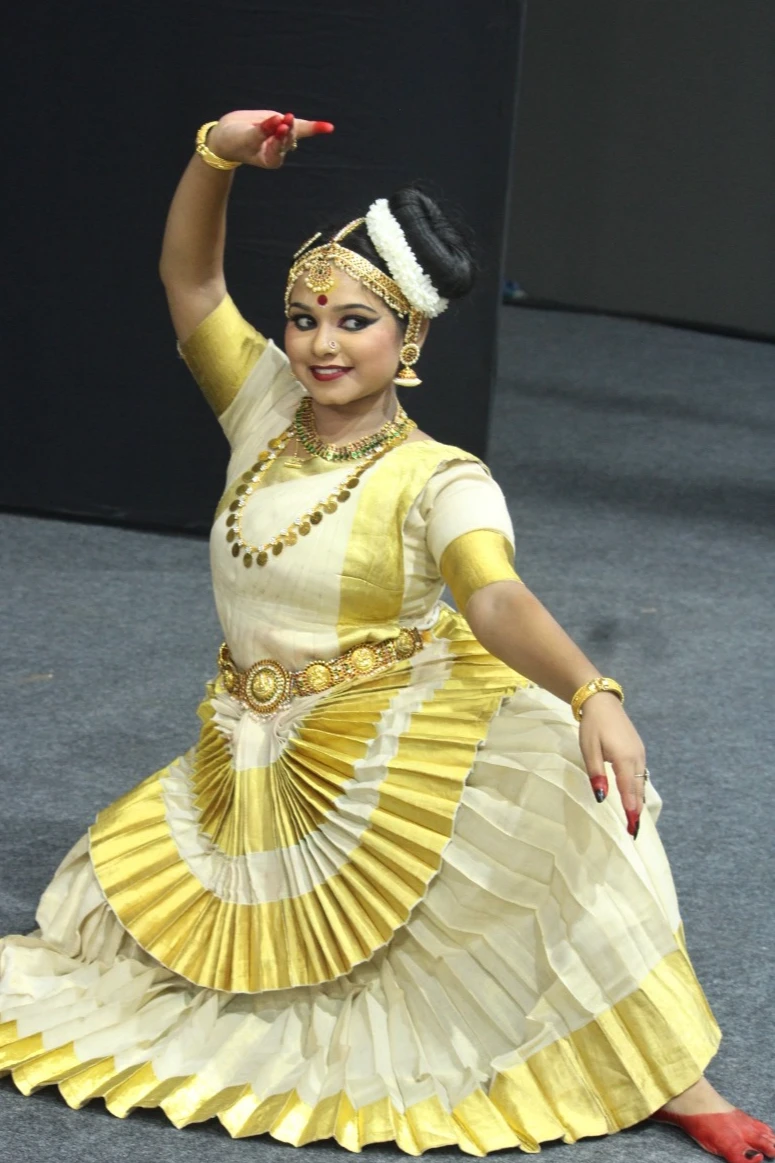Mohiniyattam
Mohiniyattam, one of the classical dance forms of India, hails from the lush state of Kerala. The name "Mohiniyattam" translates to “the dance of the enchantress”, derived from Mohini, the celestial enchantress from Hindu mythology. Known for its graceful, swaying movements and emotive expressions, Mohiniyattam epitomizes feminine beauty and elegance. Rooted in the traditions of temple dance, Mohiniyattam seamlessly blends elements of Kerala’s cultural heritage with the subtlety of Lasya (graceful, feminine dance).

Mohiniyattam Regular Senior
Mohiniyattam is a classical dance form that originated in Kerala, India. It is known for its graceful and gentle movements, characterized by fluidity and a focus on expression. The name "Mohiniyattam" comes from two words: "Mohini," meaning "the enchantress" (referring to the Hindu goddess Mohini), and "Attam," meaning "dance." The dance is often described as the dance of the enchantress, and it is deeply connected to the classical traditions of Kerala, particularly in the context of religious and spiritual expression. A typical Mohiniyattam performance is divided into the following segments: Alarippu: A warm-up dance that involves simple movements to prepare the body for the performance. Jatiswaram: A purely rhythmic composition without narrative, where the dancer focuses on movement and rhythm. Varnam: The central and most important piece, involving a combination of rhythm, expression, and narrative. It often tells a story from mythology or a devotional theme. Padams: These are lyrical pieces that express emotions like longing, love, and devotion. Tillana: A lively piece that often concludes the performance, showcasing the dancer's technical skill and rhythmic mastery. Mangalam: A final prayer or invocation, expressing gratitude and seeking blessings.
What will you learn
₹ 5300.00
Mohiniyattam Regular Junior
Mohiniyattam is a classical dance form that originated in Kerala, India. It is known for its graceful and gentle movements, characterized by fluidity and a focus on expression. The name "Mohiniyattam" comes from two words: "Mohini," meaning "the enchantress" (referring to the Hindu goddess Mohini), and "Attam," meaning "dance." The dance is often described as the dance of the enchantress, and it is deeply connected to the classical traditions of Kerala, particularly in the context of religious and spiritual expression. A typical Mohiniyattam performance is divided into the following segments: Alarippu: A warm-up dance that involves simple movements to prepare the body for the performance. Jatiswaram: A purely rhythmic composition without narrative, where the dancer focuses on movement and rhythm. Varnam: The central and most important piece, involving a combination of rhythm, expression, and narrative. It often tells a story from mythology or a devotional theme. Padams: These are lyrical pieces that express emotions like longing, love, and devotion. Tillana: A lively piece that often concludes the performance, showcasing the dancer's technical skill and rhythmic mastery. Mangalam: A final prayer or invocation, expressing gratitude and seeking blessings.
